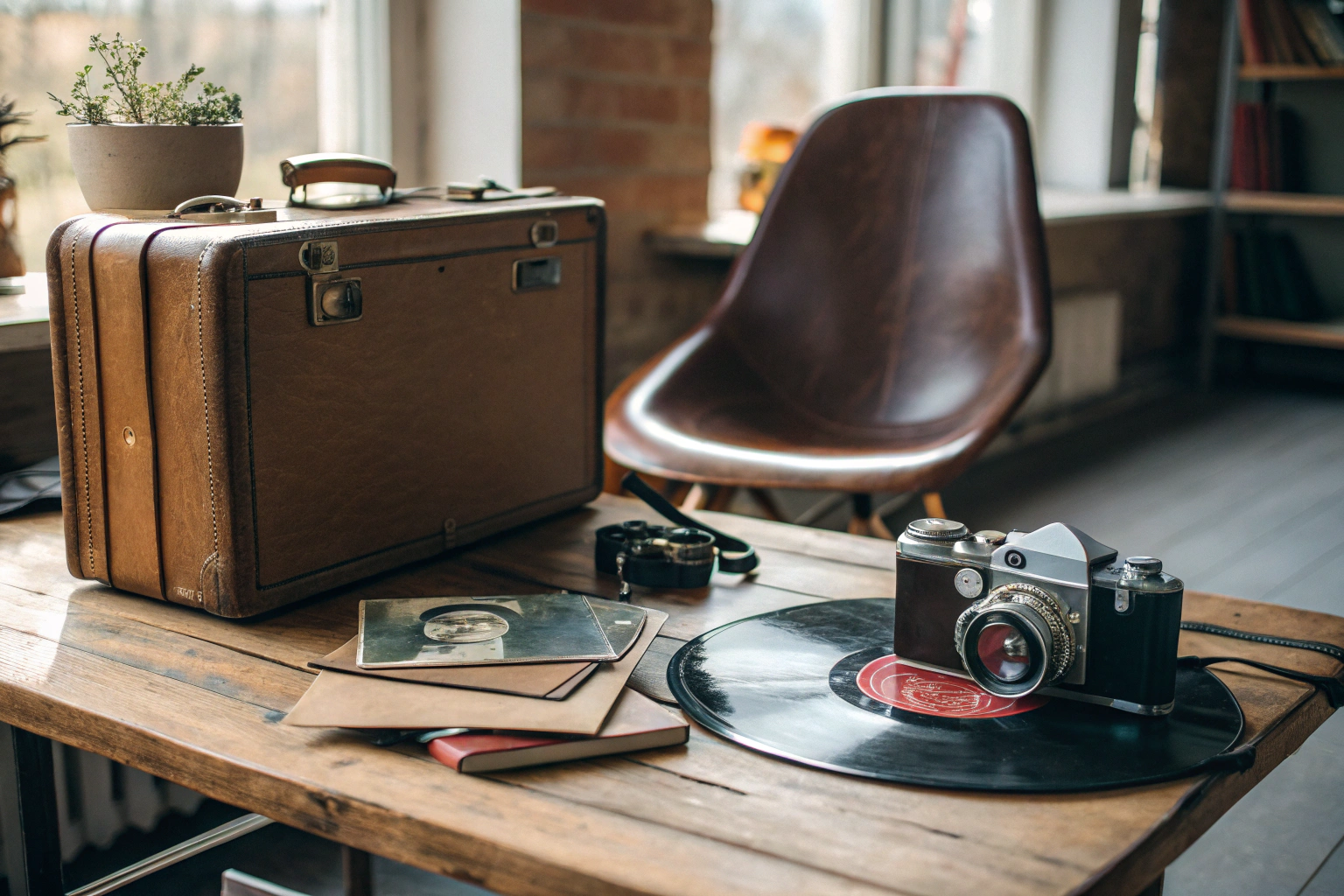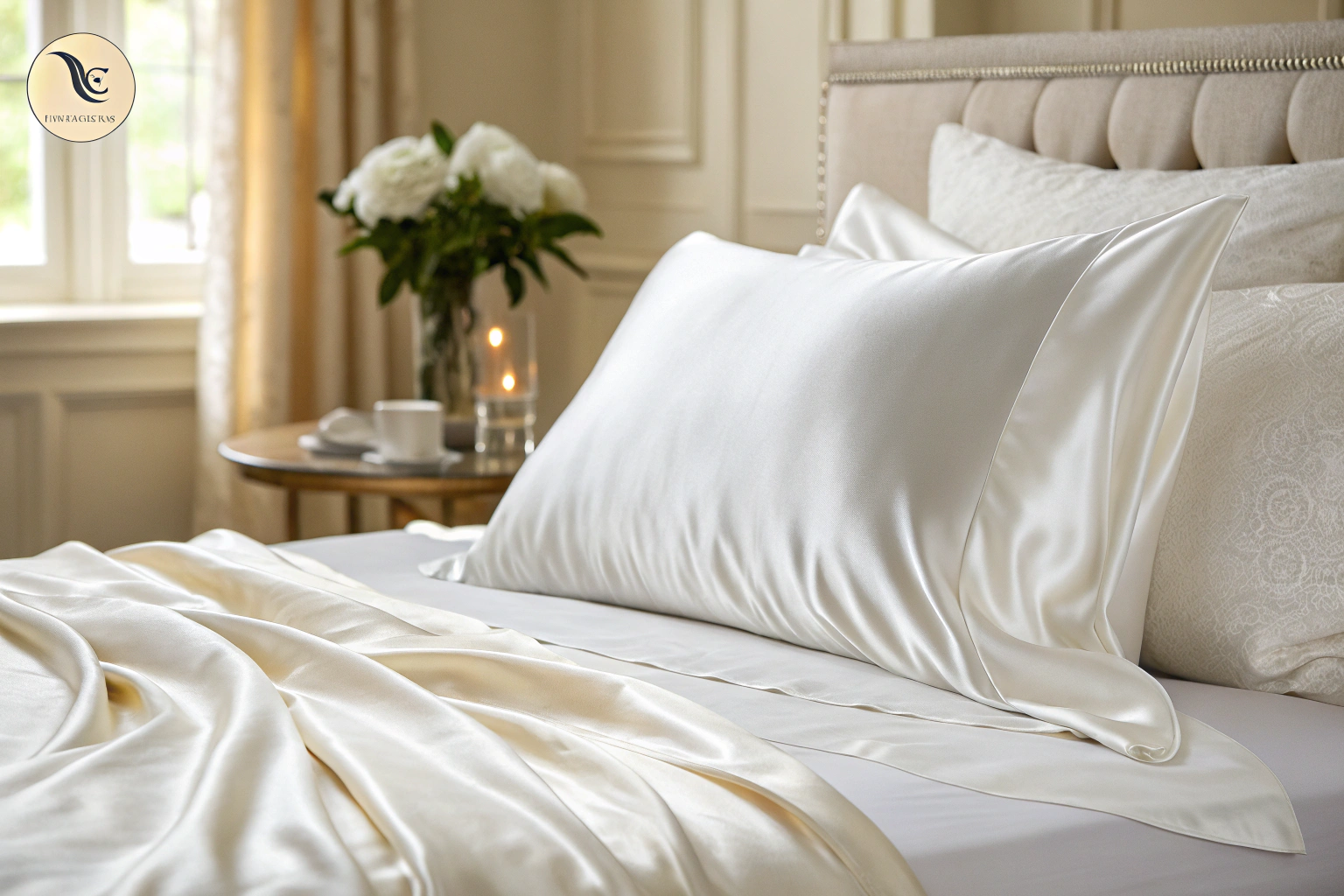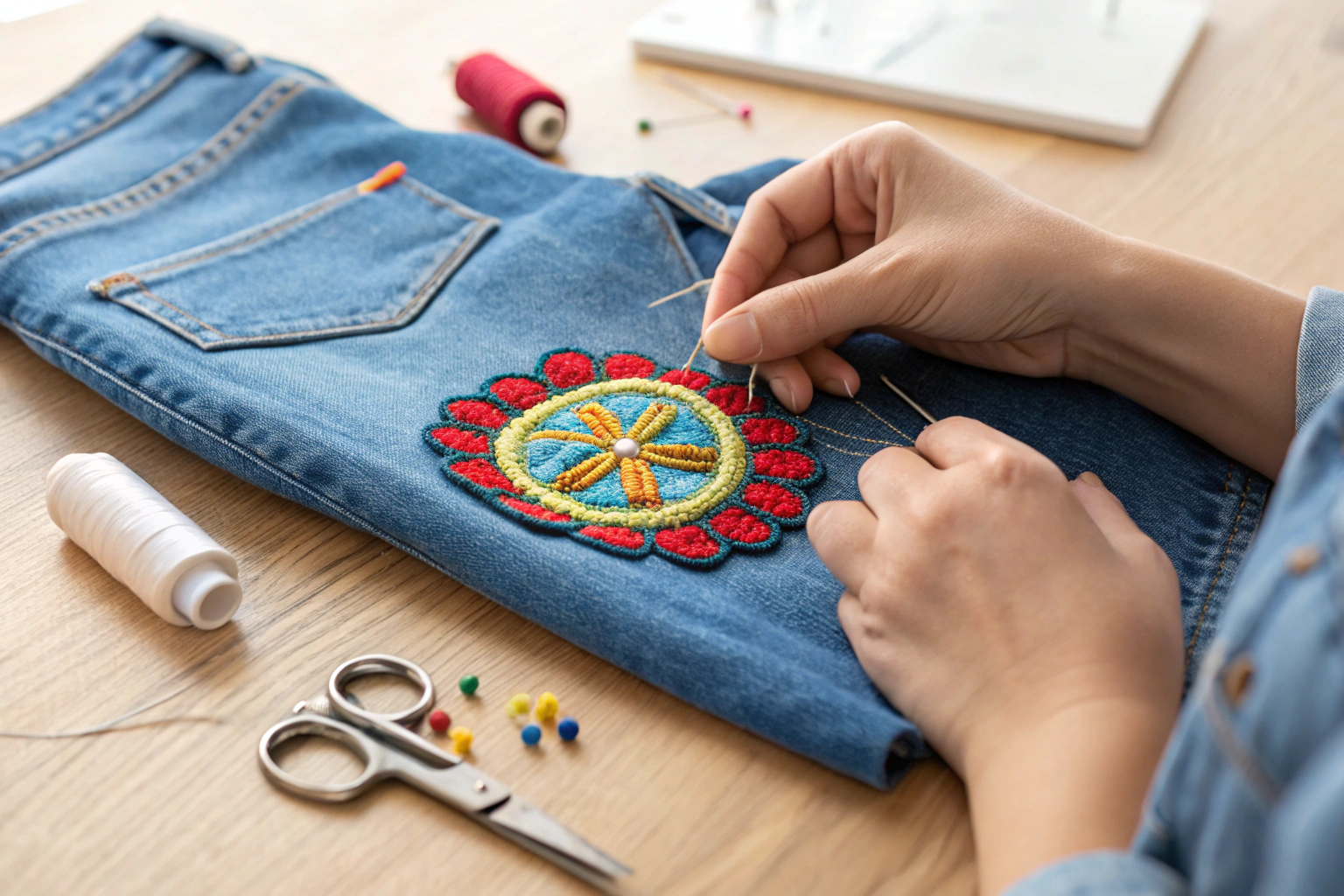As an experienced collector and appraiser with over two decades in the field, I can tell you that while the general rule states items must be 20-100 years old to be considered vintage, the reality is far more nuanced. The age question involves understanding craftsmanship, cultural significance, and category-specific standards that I’ve learned to navigate through countless estate sales and appraisals.
Understanding Vintage vs. Antique: The Age Question
The Technical Definition of “Vintage”
During my years appraising collections at estate sales, I’ve encountered countless pieces that challenged conventional age classifications. Just last month, I evaluated a 1960s mid-century modern chair that commanded higher prices than furniture twice its age, illustrating how the vintage market operates beyond simple mathematics.
The generally accepted definition places vintage items between 20 and 100 years old, with antiques crossing the century threshold. However, the term “vintage” originally referred to wine from specific years, emphasizing quality and character over mere age. This etymology explains why today’s vintage classification considers factors beyond chronological age.
In my professional experience, I’ve watched this definition evolve significantly. Early in my career, the 20-year rule was rigid, but I’ve observed how cultural shifts, market demands, and collector preferences have created more fluid boundaries. Items from the 1990s and early 2000s now command serious vintage prices, driven by nostalgia cycles and renewed appreciation for their design aesthetics.
Key Takeaways
- Vintage items are typically 20-100 years old
- Antiques are over 100 years old
- Age alone doesn’t determine vintage status
- Cultural significance and craftsmanship matter equally
- Different categories have varying age standards
Why the 20-Year Rule Is Common
The 20-year threshold emerged from practical market considerations rather than arbitrary decision-making. In my professional opinion, this timeframe allows sufficient distance for cultural perspective while maintaining relevance to living memory. I’ve observed how items from the early 2000s are just entering vintage status, creating fascinating market dynamics.
This standard reflects generational cycles of nostalgia, typically spanning 20-30 years. During my decades in the field, I’ve witnessed how items dismissed as “dated” eventually resurface as desirable vintage pieces. The 20-year rule provides a buffer between contemporary disposal and vintage appreciation.
From a practical standpoint, this timeframe allows for production cessation, scarcity development, and cultural reevaluation. I’ve tracked numerous categories where 20-year-old items suddenly gained collector interest, validating this threshold’s effectiveness in identifying emerging vintage markets.
- 2000s items: Achieving vintage status in the 2020s
- 1990s items: Gained vintage recognition in the 2010s
- 1980s items: Became vintage in the 2000s
- 1970s items: Achieved vintage status in the 1990s
- 1960s items: Recognized as vintage in the 1980s
How Old Does Something Have to Be to Be Considered Vintage
The Sliding Scale of Vintage Classification
My professional method involves categorizing vintage items along a spectrum rather than treating vintage as a binary classification. This approach has proven invaluable when pricing items for clients, as different age ranges command distinct market premiums and collector interest levels.
Early vintage items (20-30 years old) represent the newest entrants to vintage status. These pieces often appeal to younger collectors experiencing nostalgia for their childhood or young adult years. I’ve noticed these items frequently undergo rapid value fluctuations as their vintage status solidifies.
Mid-vintage pieces (40-60 years old) typically represent the sweet spot for many collectors. These items possess sufficient age for established vintage credibility while remaining accessible to those who remember their original context. In my experience, this category often provides the best balance of availability and investment potential.
Late vintage items (60-99 years old) approach antique status and often command premium prices. These pieces appeal to serious collectors and museums, representing the final stage before crossing into antique territory. I’ve observed how items in this range often experience value acceleration as they approach the century mark.
Understanding these distinctions allows collectors to make informed decisions about acquisition timing and investment strategies. Throughout my career, I’ve used this sliding scale to help clients understand why seemingly similar items from different decades can have vastly different market values.
Prominent Style Eras and Their Impact on Vintage Classification
My expertise in identifying design periods has revealed how certain style eras maintain elevated vintage status regardless of strict age requirements. During my years of appraising collections, I’ve consistently observed how items from specific periods command premium prices due to their distinctive aesthetic and cultural significance.
The Victorian era’s ornate styling, Arts and Crafts movement’s emphasis on handcraftsmanship, and Art Deco’s geometric sophistication create timeless appeal that transcends simple age calculations. I’ve appraised pieces from these periods that consistently outperform contemporary items of similar age.
In my experience, clients often underestimate how design era identification affects valuation. A piece from the height of the Art Nouveau movement will typically command higher prices than items from transitional periods, even when ages are comparable. This knowledge has proven essential in building my personal collection and advising clients on acquisition strategies.
- Victorian (1837-1901): Ornate details, rich materials, elaborate craftsmanship
- Arts and Crafts (1880-1920): Handmade quality, natural materials, simple forms
- Art Nouveau (1890-1910): Flowing lines, nature motifs, innovative techniques
- Art Deco (1920-1940): Geometric patterns, luxury materials, streamlined forms
- Mid-Century Modern (1945-1965): Clean lines, functional design, innovative materials
Vintage by Category: Different Standards for Different Items
Clothing and Fashion Accessories
Fashion’s rapid evolution creates unique vintage dynamics that I’ve studied extensively through my personal collection spanning several decades. Clothing from the 1960s through 1990s represents the most active vintage fashion market, with certain periods commanding exceptional prices due to their iconic status and cultural significance.
During my years of collecting vintage fashion, I’ve learned to date pieces using label designs, stitching techniques, and fabric compositions. Union labels, zipper styles, and construction methods provide reliable dating clues that I’ve used to authenticate countless pieces. The evolution from metal to plastic zippers, changes in sizing standards, and shifts in manufacturing locations all serve as chronological markers.
Designer pieces from fashion houses like Chanel, Dior, and Yves Saint Laurent maintain premium vintage status even when relatively young, while mass-produced items require greater age to achieve vintage recognition. I’ve observed how certain decades cyclically return to fashion prominence, creating fluctuating demand patterns that savvy collectors can leverage.
Accessories like handbags, shoes, and jewelry follow similar patterns but often achieve vintage status more quickly due to their distinctive styling and superior craftsmanship. In my collection, I’ve found that accessories from the 1970s and 1980s now command serious vintage prices, driven by their bold designs and quality materials.
Furniture and Home Decor
Furniture represents one of the most nuanced vintage categories, where design movements often matter more than strict age requirements. In my own home, I’ve curated pieces that exemplify true vintage quality, focusing on craftsmanship and design significance rather than simply meeting age thresholds.
Mid-century modern furniture perfectly illustrates this principle. Pieces from the 1950s and 1960s command premium prices not just because of their age, but due to their revolutionary design principles and superior construction methods. When appraising furniture, I distinguish between mass-produced vintage items and artisan-crafted pieces, with the latter commanding significantly higher values.
My appraisal experience has taught me to recognize quality indicators that separate valuable vintage furniture from merely old pieces. Dovetail joints, solid wood construction, and designer maker’s marks all contribute to vintage classification and valuation. I’ve handled pieces where exceptional craftsmanship elevated relatively young items to vintage status.
The furniture market shows particular appreciation for certain decades, with 1960s and 1970s pieces experiencing renewed interest. During estate sales, I’ve observed how items from these periods consistently outperform expectations, driven by their distinctive aesthetics and quality materials.
- Art Deco (1920s-1930s): Geometric forms, luxury materials, streamlined design
- Mid-Century Modern (1940s-1960s): Clean lines, functional beauty, innovative materials
- Space Age (1960s-1970s): Futuristic forms, plastic materials, bold colors
- Postmodern (1980s-1990s): Eclectic styles, mixed materials, artistic expression
Electronics and Technology
Technology’s rapid evolution creates accelerated vintage timelines that I’ve tracked through my collection of vintage electronics. Items become collectible much faster than traditional categories due to technological obsolescence and nostalgic appeal for discontinued formats and designs.
In my collection, I’ve observed how gaming consoles, early computers, and audio equipment achieve vintage status within 15-20 years rather than the traditional 20-year threshold. The Nintendo Entertainment System, early Apple computers, and vintage synthesizers now command substantial collector premiums despite their relatively recent manufacture dates.
Specific models that I’ve tracked over the years show remarkable value appreciation. Original iPods, early mobile phones, and classic gaming systems have become highly sought-after vintage items, driven by their revolutionary impact and nostalgic appeal. The key factors include technological significance, design innovation, and cultural impact rather than simple age.
Brand reputation plays a crucial role in technology vintage classification. Apple, Sony, and Nintendo products tend to achieve vintage status more quickly than generic alternatives, reflecting their design excellence and cultural significance. My experience has shown that well-preserved examples of iconic technology items often outperform traditional vintage categories in terms of value appreciation.
| Modern Technology | Vintage Counterpart | Vintage Status Year |
|---|---|---|
| Smartphones | Original iPhone (2007) | 2022-2025 |
| Streaming Devices | Original iPod (2001) | 2021 |
| Gaming Consoles | Nintendo 64 (1996) | 2016 |
| Laptops | PowerBook G4 (2001) | 2021 |
Watches and Jewelry
Watches and jewelry represent sophisticated vintage categories where brand reputation, craftsmanship, and historical context significantly impact classification beyond simple age requirements. Throughout my years of authentication and appraisal, I’ve developed expertise in recognizing the subtle details that distinguish truly valuable vintage timepieces and jewelry from merely old accessories.
My experience with vintage watches has taught me to appreciate how certain brands achieve vintage status more quickly than others. Rolex, Omega, and Patek Philippe pieces from the 1970s and 1980s now command serious vintage premiums, while lesser-known brands require greater age to achieve similar recognition. The key factors include movement quality, case materials, and historical significance.
During my years of collecting, I’ve encountered remarkable vintage jewelry pieces that demonstrate how craftsmanship and materials can elevate items to vintage status. Art Deco jewelry from the 1920s and 1930s, with its geometric designs and quality gemstones, represents the pinnacle of vintage jewelry collecting. These pieces command premium prices due to their exceptional artistry and historical significance.
Authentication remains crucial in vintage watch and jewelry collecting. I’ve developed methods for identifying period-appropriate hallmarks, maker’s marks, and construction techniques that help verify authenticity. The most valuable vintage pieces often feature hand-engraved details, quality materials, and provenance documentation that supports their vintage classification.
What Makes Something “True Vintage” Beyond Age
Craftsmanship and Materials
Throughout my decades of handling vintage items, I’ve developed an appreciation for the superior craftsmanship that distinguishes true vintage pieces from merely old objects. When authenticating items, I examine specific construction details that reveal the quality and care invested in their creation during different historical periods.
The materials used in vintage items often serve as reliable dating and quality indicators. In my experience, items from the mid-20th century frequently feature materials and techniques that are no longer economically viable in modern production. Hand-stitched leather, solid wood construction, and metal hardware instead of plastic alternatives all signal authentic vintage quality.
I’ve learned to recognize how manufacturing changes over decades impact vintage classification and valuation. The transition from hand-crafted to machine-made production, changes in material availability due to wartime rationing, and shifts in labor practices all left distinctive marks on vintage items that trained eyes can identify.
Specific construction details I examine include joinery techniques in furniture, stitching patterns in clothing, and finishing methods in decorative objects. These details reveal not just age, but the level of craftsmanship that makes certain pieces genuinely valuable vintage items rather than simply old objects that happen to meet age requirements.
The quality of materials used in vintage items often exceeds modern standards due to different economic conditions and manufacturing priorities. I’ve handled vintage pieces featuring solid brass hardware, genuine leather, and high-quality fabrics that would be cost-prohibitive in contemporary production, making these items increasingly valuable as time passes.
Cultural and Historical Significance
An item’s connection to significant cultural movements, historical events, or iconic figures can elevate its vintage status regardless of exact age. During my years of collecting, I acquired a 1960s protest poster that possesses tremendous historical significance, making it far more valuable than its modest age might suggest.
Provenance documentation has become increasingly important in my authentication process. Items with verifiable connections to notable figures, significant events, or cultural movements command premium prices and achieve vintage status more quickly than similar pieces without such documentation. I’ve learned to research and verify these connections as part of my comprehensive evaluation process.
The cultural impact of certain items can transcend traditional age requirements for vintage classification. Objects associated with significant social movements, technological breakthroughs, or artistic achievements often achieve vintage status based on their historical importance rather than simple chronological age.
In my collection, I’ve prioritized items that represent significant cultural moments or technological innovations. These pieces often appreciate more rapidly than items chosen solely for their age, as their historical significance becomes more apparent over time. The key is recognizing cultural importance while it’s still accessible to collectors.
- Historical events: Items connected to significant moments in history
- Celebrity ownership: Pieces with documented famous previous owners
- Limited production: Items produced in small quantities or for special occasions
- Cultural movements: Objects representing important social or artistic movements
- Technological firsts: Items representing breakthrough innovations
The Difference Between Vintage, Retro, and Reproduction
Understanding Retro Items
During my years in the marketplace, I’ve frequently encountered confusion between vintage and retro items, making education on this distinction crucial for collectors. Retro items are newly manufactured products designed to emulate the style of past eras, particularly the 1960s through 1990s, while vintage items are genuinely from those time periods.
My experiences identifying retro reproductions have taught me to recognize the subtle differences in construction, materials, and design details that distinguish new retro items from authentic vintage pieces. Modern retro items often feature updated safety standards, contemporary materials, and manufacturing techniques that weren’t available during the original periods they’re emulating.
I’ve observed how certain retro styles have become popular enough to create their own collecting markets, separate from vintage items. However, these retro pieces lack the historical authenticity and craftsmanship that make vintage items valuable. The key distinction lies in when the item was actually produced, not just what style it represents.
Popular retro categories I’ve encountered include furniture designed in mid-century modern styles, clothing reproducing 1950s silhouettes, and electronics styled to resemble vintage designs. While these items can be attractive and functional, they don’t possess the historical significance or investment potential of authentic vintage pieces.
Understanding this distinction has been crucial in my client education efforts. Many buyers assume that retro items will appreciate like vintage pieces, but this is rarely the case. Retro items are contemporary products that may become vintage themselves in 20-30 years, but they currently lack the historical authenticity that drives vintage values.
Spotting Reproductions and Faux Vintage
My authentication process has been refined through encounters with increasingly sophisticated reproductions marketed as vintage items. Early in my career, I encountered a well-crafted reproduction mid-century modern chair that initially appeared authentic until I noticed the modern joinery techniques and contemporary wood stain that eventually revealed its true nature.
Common reproduction techniques I’ve learned to identify include artificial aging processes, modern materials disguised with period-appropriate finishes, and construction methods that weren’t available during the supposed manufacturing period. These items often feature wear patterns that don’t match natural aging or materials that weren’t used in the original era.
The most sophisticated reproductions often fool casual observers but reveal themselves under careful examination. I’ve developed methods for identifying modern manufacturing techniques, contemporary materials, and artificial aging that help distinguish authentic vintage pieces from clever reproductions.
Documentation becomes crucial when dealing with high-value potential vintage items. I’ve learned to research manufacturer histories, production dates, and period-appropriate construction techniques to verify authenticity. This research often reveals discrepancies that expose reproductions masquerading as vintage items.
My cautionary advice to collectors includes being skeptical of vintage items that appear too perfect, lack appropriate wear patterns, or are priced significantly below market values. These warning signs often indicate reproductions rather than authentic vintage pieces.
The Value Spectrum: From Vintage to Antique
When Vintage Becomes Antique
My experience tracking items through the vintage-to-antique transition has revealed fascinating market dynamics that occur as pieces approach the century mark. During my career, I’ve watched 1920s items transition from vintage to antique status, observing how this change affects collector interest and market valuation.
The transition point creates unique opportunities and challenges for collectors. Items from the 1920s that recently achieved antique status have shown mixed performance, with some categories experiencing value increases while others remain stable. Art Deco pieces have generally performed well during this transition, while more common household items have shown less dramatic changes.
I’ve noticed that certain vintage categories gain prestige as they approach antique status, while others may lose relevance to contemporary collectors. The key factors include aesthetic appeal, historical significance, and continued cultural relevance rather than simple age progression.
My observations suggest that the most successful vintage-to-antique transitions occur when items maintain contemporary appeal while gaining historical significance. Pieces that represent important design movements or cultural moments tend to appreciate more during this transition than items chosen solely for their age.
Current market trends suggest that 1920s items are experiencing renewed interest as they achieve antique status, particularly pieces representing the Jazz Age, Art Deco movement, and early automotive era. These items benefit from both historical significance and continued aesthetic appeal.
Investment Potential of Vintage Items
My investment strategy has focused on identifying undervalued vintage categories with strong appreciation potential. Through decades of collecting and market observation, I’ve developed criteria for recognizing vintage items that are likely to increase in value over time.
Specific categories from my collection that have shown significant appreciation include mid-century modern furniture (200-300% increase over 15 years), vintage designer handbags (150-250% increase), and early electronics (100-400% increase depending on rarity). These percentages reflect careful acquisition and market timing rather than random collecting.
My strategy emphasizes quality over quantity, focusing on pieces that represent significant design movements, feature superior craftsmanship, or possess documented provenance. This approach has consistently outperformed broader vintage market trends and provided both personal enjoyment and financial returns.
The most successful vintage investments in my experience combine historical significance with contemporary appeal. Items that speak to current design trends while maintaining authentic vintage character tend to appreciate most consistently over time.
- Focus on design significance: Items representing important artistic or cultural movements
- Prioritize quality craftsmanship: Superior construction and materials indicate lasting value
- Research provenance: Documented history adds authenticity and value
- Consider contemporary relevance: Items that appeal to current tastes appreciate faster
- Buy the best examples: Condition and rarity significantly impact appreciation potential
Factors Affecting Value Beyond Age
My appraisal methodology considers multiple value dimensions beyond chronological age. During my career, I’ve encountered numerous situations where newer vintage items commanded higher prices than older pieces due to superior condition, greater rarity, or stronger cultural significance.
Brand reputation plays a crucial role in vintage valuation. A 1970s Hermès handbag will typically command higher prices than a 1950s unknown brand bag despite the age difference. This reflects how brand heritage and craftsmanship reputation influence vintage market values beyond simple age calculations.
Condition assessment represents one of the most critical factors in vintage valuation. I’ve developed detailed condition standards that account for age-appropriate wear versus damage that affects value. Items in exceptional condition can command premium prices regardless of their specific age within the vintage range.
Rarity and production numbers significantly impact vintage values. Limited production runs, discontinued product lines, and items from companies that ceased operations often appreciate more rapidly than mass-produced pieces, regardless of their comparative ages.
Cultural relevance and current fashion trends can temporarily boost values for certain vintage categories. I’ve observed how vintage items featured in popular media or embraced by influential designers experience value increases that exceed their intrinsic historical worth.
- Condition (40% importance): Preservation state relative to age
- Rarity (25% importance): Scarcity in the marketplace
- Brand reputation (20% importance): Manufacturer’s legacy and quality
- Cultural significance (10% importance): Historical or artistic importance
- Current demand (5% importance): Contemporary market interest
Identifying Authentic Vintage vs. Retro Reproductions
Telltale Signs of Authentic Vintage Pieces
My authentication checklist has been developed through years of handling thousands of vintage pieces across multiple categories. This systematic approach has helped me identify authentic vintage items while avoiding costly mistakes with sophisticated reproductions.
The most reliable authentication markers include period-appropriate construction techniques, authentic materials and hardware, and wear patterns consistent with genuine aging. I’ve learned to recognize how different materials age naturally versus artificially, which often reveals reproduction attempts.
A particularly memorable discovery involved spotting a valuable 1960s Eames chair that others had overlooked in an estate sale. The authentic Herman Miller label, period-appropriate shock mounts, and natural aging patterns confirmed its authenticity despite some collectors’ skepticism about its condition.
Documentation and provenance research have become increasingly important in authentication. I’ve developed relationships with manufacturers, archives, and industry experts who can verify production details and authenticate questionable pieces through historical records.
My authentication process includes examining labels and maker’s marks, analyzing construction techniques, assessing material authenticity, and researching production histories. This comprehensive approach has helped me avoid reproductions while identifying undervalued authentic pieces.
- Labels and marks: Period-appropriate manufacturer identification
- Construction techniques: Era-specific production methods
- Material authenticity: Genuine materials from the production period
- Hardware examination: Period-appropriate fasteners and mechanisms
- Wear patterns: Natural aging versus artificial distressing
- Provenance research: Historical documentation and verification
Common Reproduction Techniques to Be Aware Of
My encounters with sophisticated reproductions have taught me to recognize the increasingly clever methods used to create “faux vintage” items. These techniques have become more sophisticated over time, requiring deeper knowledge to identify authentic pieces versus modern reproductions.
Artificial aging techniques I’ve learned to identify include chemical distressing, mechanical wear simulation, and artificial patina application. These methods often create uniform wear patterns that differ from natural aging, which typically shows more random and use-specific wear areas.
One particularly well-crafted reproduction almost fooled me until I noticed the modern screws used in its construction. Despite the artificial aging and period-appropriate styling, the contemporary hardware revealed its true manufacturing date. This experience reinforced the importance of examining all components during authentication.
Modern materials disguised with period-appropriate finishes represent another common reproduction technique. I’ve encountered items where contemporary plastics, synthetic materials, or modern alloys were treated to resemble vintage materials, requiring careful examination to identify.
My cautionary advice includes being skeptical of vintage items that lack appropriate maker’s marks, show inconsistent aging patterns, or are constructed with modern techniques that weren’t available during their supposed production period. These inconsistencies often reveal reproduction attempts.
Dating and Identifying Vintage Items
Research Methods for Vintage Authentication
My personal research process when encountering unfamiliar vintage items involves multiple verification steps that have proven reliable over decades of collecting. Recently, I encountered a unusual 1950s ceramic piece that required extensive research before I could confidently determine its origin, age, and value.
The specific resources I consult include manufacturer archives, industry publications from relevant periods, auction records, and expert consultations. This multi-source approach helps verify information and identify inconsistencies that might indicate reproduction items or misattributed pieces.
Digital databases and online resources have revolutionized vintage research, but I’ve learned to verify digital information through multiple sources. Patent records, trademark registrations, and historical advertisements often provide definitive dating information for vintage items.
Professional networks and expert consultations remain invaluable for challenging authentication cases. I’ve developed relationships with specialists in various vintage categories who can provide expertise beyond my personal knowledge base.
My research methodology emphasizes documentation and verification rather than assumptions. This approach has helped me avoid costly mistakes while identifying valuable pieces that others might overlook due to insufficient research.
- Reference books: Warman’s, Miller’s, and category-specific guides
- Online databases: LiveAuctioneers, Heritage Auctions, WorthPoint
- Professional organizations: Appraisers associations and collector groups
- Manufacturer archives: Company records and historical documentation
- Expert consultations: Specialists in specific vintage categories
Physical Examination Techniques
My step-by-step examination process has been refined through years of handling vintage items across multiple categories. This systematic approach helps identify authentic pieces while revealing reproduction attempts and misattributed items.
The physical examination begins with overall condition assessment, followed by detailed inspection of construction methods, materials, and hardware. I’ve learned to recognize how different materials age and which construction techniques were used in different historical periods.
Surprising authentication clues I’ve discovered include maker’s marks in unexpected locations, period-appropriate adhesives and fasteners, and construction details that reveal manufacturing dates. These subtle indicators often provide more reliable dating information than obvious features.
Magnification tools and specialized lighting have become essential equipment for detailed examination. These tools reveal construction details, material characteristics, and wear patterns that aren’t visible to casual observation.
My examination process includes documenting findings through photographs and detailed notes. This documentation helps verify authenticity and provides valuable records for insurance and resale purposes.
Caring for Your Vintage Collection
Preservation Practices I Recommend
My personal collection preservation methods have been developed through experience with various vintage materials and environmental conditions. These practices have successfully maintained both the condition and value of my collection over decades of ownership.
Climate control represents the most critical factor in vintage preservation. I maintain consistent temperature and humidity levels in my storage and display areas, using dehumidifiers and air conditioning to prevent the moisture fluctuations that cause the most damage to vintage materials.
Specific preservation techniques I use include acid-free storage materials, UV-filtered lighting for displays, and regular cleaning with appropriate products for different materials. I’ve learned that prevention is more effective and economical than restoration for maintaining vintage item values.
A particularly successful preservation story involved rescuing a 1940s leather jacket that appeared beyond saving. Through careful cleaning, conditioning, and proper storage, I was able to restore its functionality while maintaining its authentic vintage character and value.
My preservation philosophy emphasizes maintaining original condition rather than restoration, as over-restoration can actually decrease vintage values. I focus on preventing further deterioration while preserving the authentic aging and patina that contribute to vintage character.
- Assess current condition: Document existing state before preservation efforts
- Control environment: Maintain stable temperature and humidity
- Use appropriate materials: Acid-free storage and archival-quality supplies
- Clean gently: Use period-appropriate cleaning methods and products
- Document changes: Photograph and record all preservation activities
- Consult experts: Seek professional advice for valuable or unusual items
Display and Storage Solutions for Vintage Items
My home display strategy balances aesthetic appeal with preservation requirements, creating attractive presentations that protect vintage items from damage while allowing enjoyment of their beauty and historical significance.
Different vintage categories require specific display considerations. I’ve developed custom solutions for problematic items, including UV-filtering display cases for light-sensitive materials, climate-controlled cabinets for delicate pieces, and rotation systems that limit exposure time for fragile items.




